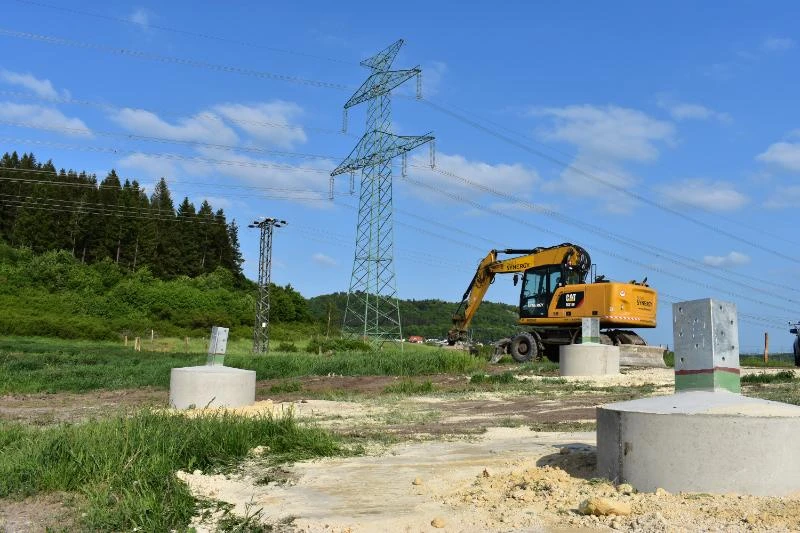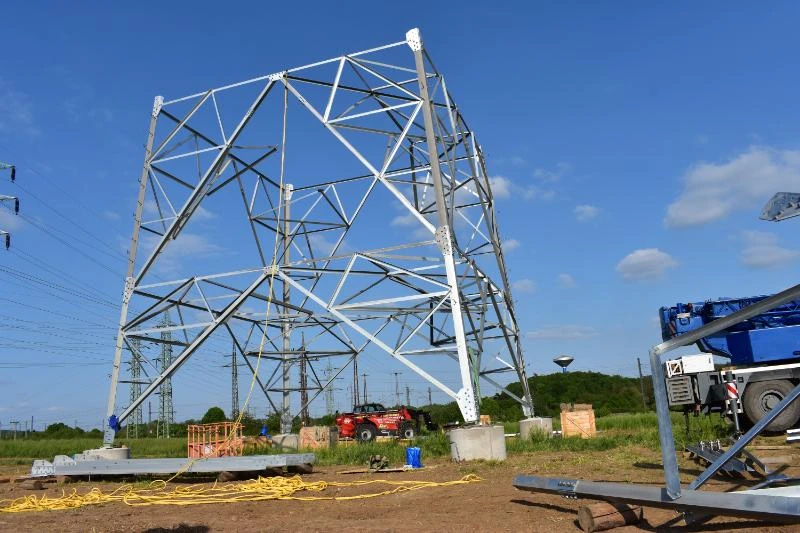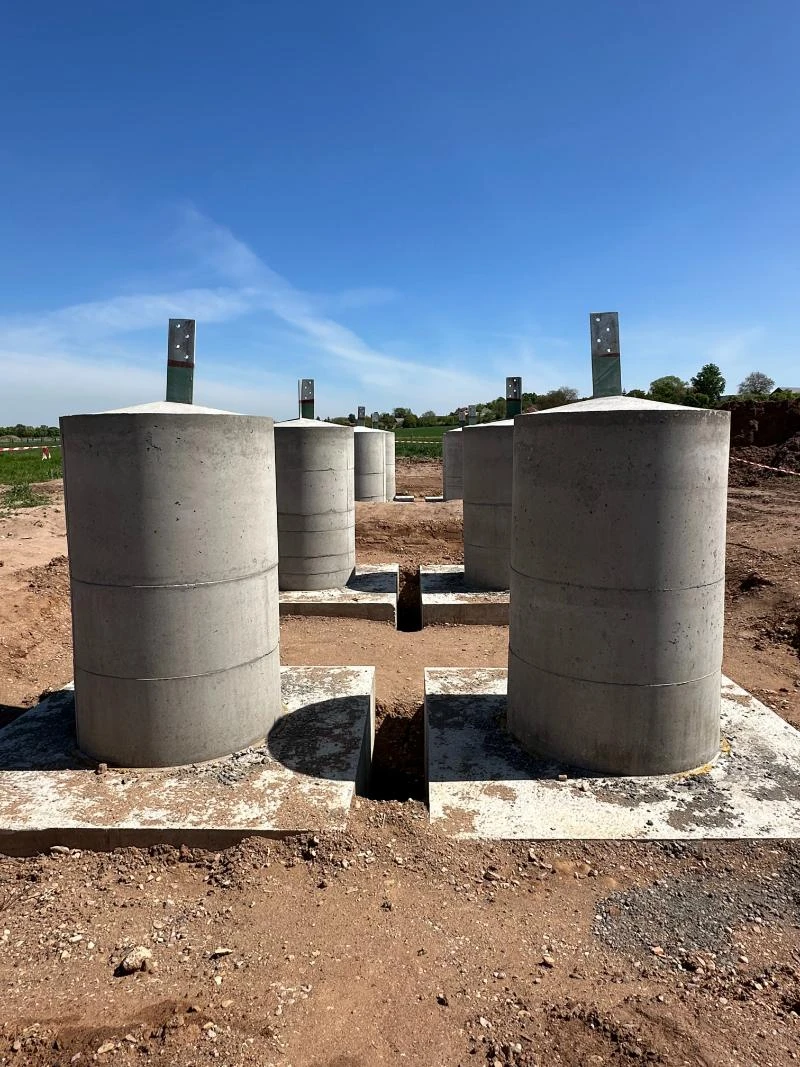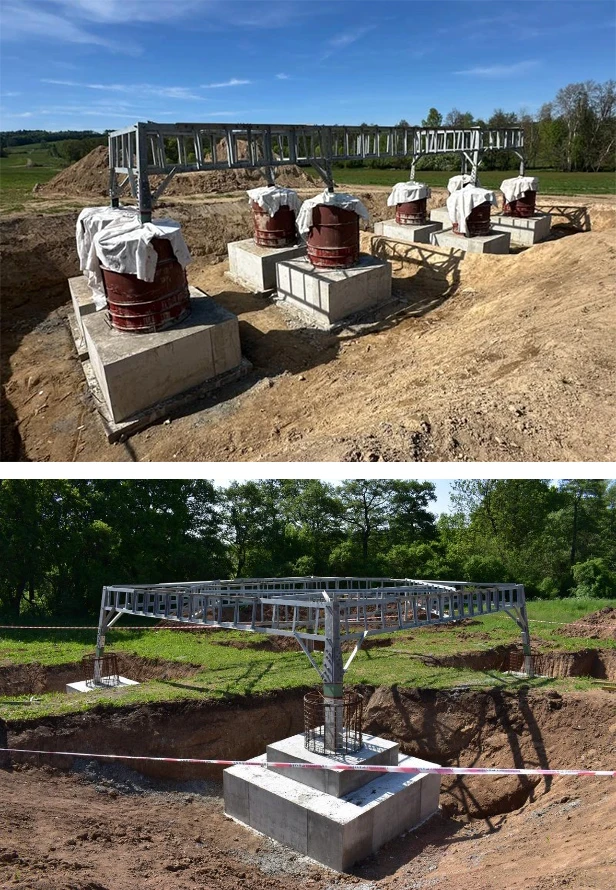We focus mainly on the construction of foundation structures very high voltage (HV 400 kV) and high voltage (HV 110 kV), where we emphasize quality and precision. We also specialise in the construction of service buildings, civil engineering structures and transport and service roads.
Thanks to our experience in demanding construction work under extreme climatic conditions and challenging terrain, we are able to ensure quality project implementation in accordance with technical standards and customer requirements.
We have off-road vehicles and mixers FIORI, which allow us to carry out concreting works even in inaccessible terrains, where a conventional auto-mixer could not reach.
What are the main challenges in the implementation of foundation structures for HV and MV and how do you handle them?
The main challenges in the implementation of foundation structures for HV and EHV lie in unfavourable natural conditions such as inaccessible terrain, high levels of rain (access roads) and groundwater (pile work, sheet piling) and logistical problems with transporting materials to remote and difficult to access locations. These factors can negatively affect schedule adherence. We use modern machinery and technological procedures to overcome them.
Therefore, the biggest challenge for us is to ensure the smooth fulfilment of our customers' technological schedules.
The key to success is a flexible approach, coordination of work and constant monitoring of progress, which enables us to ensure that construction runs smoothly despite these obstacles.
Do you have experience with the construction of foundations for specific types of equipment (e.g. transformers, substations)?
Yes, we are able to construct 400 kV and 110 kV substations, both in sub-units as well as complex complete units.
How long does it usually take to build foundation structures for HV and MV masts?
The construction time for one mast depends on the type of mast and voltage level. For HV masts, such as gantry or Danube, the construction time can vary, often by several days, depending on the specifics of the project. In the case of turnkey construction of an entire section, including field work, the total construction time can be up to one year.


What is the process of building new foundation structures for HV and VVN?
The construction process begins with planning and coordination of the power line shutdowns. This is followed by galvanic isolation of equipment and cable disconnection, ensuring that there are no active electrical circuits on site. Then the existing poles must be dismantled and the old footings removed. The waste from this process is taken to landfill or recycling centres. Once the site is ready, the actual construction of the concrete foundations begins.
First, the base concrete is prepared, followed by the placement of rebar to provide the necessary strength for the structure. This is followed by the placement of the formwork that defines the shape of the foundations. Concreting is then carried out in a further 2-3 stages: the first stage is divided into two parts, each of which is concreted separately to ensure that the strength of the concrete develops evenly. Once the first stage has matured, the second stage of concreting is carried out. Once all the concrete layers have been completed, the foundation header is finished (only for certain types of poles) and landscaping around the structure is carried out, which includes, for example, treating the surrounding surface and preparing for the installation of the new poles.
How do you work with energy companies or designers to implement these foundation structures?
We meet the needs of our partners and clients as much as the situation allows. Our cooperation is based on daily communication, where we meet regularly and coordinate our actions to ensure that the projects run smoothly. When we encounter imperfections in projects or ambiguities, we proactively propose solutions and adjust our plans to be as efficient as possible. This flexible approach allows us to respond quickly to unexpected problems and ensure that the outcome always meets the client's expectations and needs.


What certifications or standards do you meet when building high and very high voltage foundation structures?
We comply with all relevant TNs (technical standards) specified by the individual investors when building high and very high voltage foundation structures. We regularly check that these standards are up-to-date and ensure that all work is carried out in accordance with the applicable regulations. In addition, we have quality certifications that confirm our high standards in quality management and environmental and safety measures. Our certifications include ISO EN ISO 9001:2016 for quality management system, ISO EN ISO 14001:2016 for environmental management and ISO EN ISO 45001:2018 for occupational health and safety management system. These certifications demonstrate our commitment to high quality, sustainability and safety in all phases of construction.
How do you ensure the quality and long-term durability of foundation constructions in demanding high-voltage conditions?
In order to ensure the perfect execution of foundation structures in challenging high-voltage conditions, emphasis is placed on precise preparation and the use of quality materials that meet strict norms and standards. In the case of imperfect projects, we actively communicate with the customer and work with leading experts and construction experts who are members of SPS (the so-called Association of Construction Entrepreneurs). This approach allows us to identify potential problems early and find effective solutions, ensuring the long-term durability and stability of the foundation structures.
What are the reasons for the construction of new HV and VVN footings?
The reasons for the construction of new footings for HV and VVN may be different, but the main ones include the need to provide more power to the transmission networks. This may include, for example, increasing the capacity of existing lines or building new transmission routes. In some cases it is also necessary to replace old, rotten or technically inadequate foundation structures that no longer meet the requirements of the applicable technical standards (TN) given by the customer. This situation may arise due to the deterioration of materials, which threatens the stability and safety of the entire transmission infrastructure.
Other services offered
Price offer
The quotation is prepared individually based on the specific requirements of the project, the scope of work and the specific conditions of implementation. The price calculation takes into account the type and quantity of material required, the difficulty of the terrain, the equipment used, the distance of transport and the overall time schedule.



Complex realization from A to Z

Many years of experience

Individual approach
Why choose Build Synergy
Build Synergy s.r.o. is a company that stands out for its expertise and years of experience in the industry. Our team is made up of professionals with an innovative approach who focus on efficient and quality project execution; We utilize modern technology and state-of-the-art equipment that enables us to work quickly, accurately and with maximum efficiency.
An important part of our company philosophy is an individual approach to each client. Build Synergy emphasizes transparent communication, fair pricing and flexible solutions that meet specific customer needs.
Our references

Demolition of DO04, DO12 and DO13 Structures in Ostrava Vítkovice

V460 - modernisation (TR Nošovice - TR Albrechtice) - line length 16,42km


